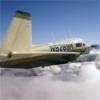So, what about these hydraulic flaps?
-
Members Online
- DMM
- gevertex
- jrod_stat
- Stubby
- TCC
- PaulM
- DRH4249
- WilliamR
- dkkim73
- JB2000
- donkaye
- cferr59
- 47U
- Schllc
- takair
- Super Phreek
- Bunti
- eman1200
- Robert Hicks
- mooneyflyfast
- acekng1
- khedrei
- Andy95W
- J-Bear Aviation
- AMG880
- Arthur
- N201MKTurbo
- jma201
- Will.iam
- Jason_Cincy
- ckb
- Stealth Mooney
- Hank
- ta2too
- ElkoRandy20J
- TheAv8r
- Niko182.
- exM20K
- Fritz1


Recommended Posts
Join the conversation
You can post now and register later. If you have an account, sign in now to post with your account.